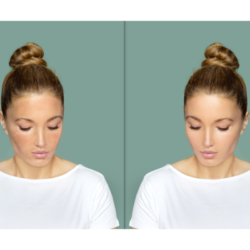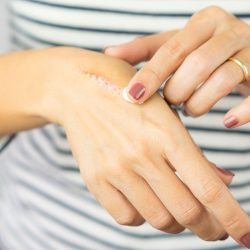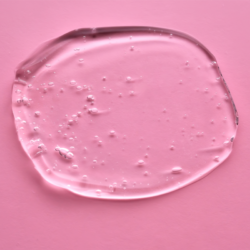Finding a good sun protection cream to protect against the sun’s rays this summer can be difficult when there’s so much choice on the shelves of chemists. To help you choose, we’ve decided to talk to you about the ingredients in sun protection products. Protection against UVA/UVB raysis essential, yes, but not at the expense of the environment! Here are some good reasons to take an interest in the ingredients in your sun protection! Suncare is an essential part of protecting our skin from the harmful effects of UV rays. Here are five tips to help you choose the right suncare product for summer, so you can enjoy the sun to the full and in complete safety.
@soin.et.nature 🌞🔍 La protection solaire n’est pas une taille unique pour tous! Voici comment trouver votre crème solaire idéale grâce à votre pharmacie en ligne Soin et Nature. 🎯 1️⃣ Pour une peau sujette aux rougeurs et éruptions, choisissez Photoderm AR SPF50+. Sa protection UVA/UVB de très haute technologie apaise et atténue les rougeurs. Non collante, non grasse, et résistante à l’eau. 🌊✨ 2️⃣ Avec une peau soucieuse du vieillissement, Photoderm SPOT-AGE SPF50+ est la solution. Sa formule booste la fermeté et l’élasticité cutanée, et prévient l’apparition de nouvelles taches. Parfait comme base de maquillage et résiste à la chaleur et l’humidité! 🕰️💦 3️⃣ Pour une peau à tendance acnéique, optez pour Photoderm AKN Mat SPF30. Elle matifie votre peau toute la journée et améliore la qualité du sébum. Une texture fluide qui résiste à l’eau et à l’humidité. 🌈🍃 Pour éviter les coups de soleil, appliquez généreusement et régulièrement votre crème solaire, surtout après avoir nagé, transpiré ou vous être essuyé. N’oubliez pas, la meilleure protection est de combiner la crème solaire avec d’autres méthodes : chapeau, lunettes de soleil, vêtements protecteurs. 🧢🕶️ 💥Rendez-vous sur notre site soin-et-nature.com pour trouver la crème qui vous convient le mieux! 🛍️💖 #ProtectionSolaire #SoinetNature #SanteDeLaPeau #Beauté #Esthétique #Photoderm #ConseilsBeauté #sunprotection #suncream #rosacea #eczema #fyp #SoleilSécurité #SPF #tiktokbeauté #SoinsDeLaPeau 🌸👙🌞🌻
Understanding protection factors
The SPF indicates a sunscreen’s ability to protect against UVB rays, which are responsible for sunburn. The higher the SPF, the greater the protection. To choose the right sun cream for you, it’s best to select an SPF that’s right for your skin type and the intensity of the sun.
UVA protection It’s essential to choose a sun cream that offers protection against UVA rays, which are responsible for skin ageing and the formation of pigmentation spots. Make sure you choose a sun cream with the “UVA” or “PA+” logo on the packaging.
Choosing the right texture
Choosing the right texture for your sun cream is essential for effective sun protection and optimum comfort. Discover the different textures available and find the one that best suits your skin type and preferences.
- Sun creams
These are thick and moisturising, ideal for dry skin. They offer solid protection, but can be a little sticky and difficult to spread. For combination to oily skin, suncare fluids are better suited. They are also available tinted and with an anti-ageingingredient.
Our favourites: Dermaceutic Sun Ceutic Tinted SPF50 , Filorga Uv 50+Bronze Face Fluid 40 ml
- Sun sprays
Sun sprays are easy to apply and provide even coverage. They are suitable for most skin types, but may be less moisturising than creams.
- Suncare gels
Sun gels are lightweight and absorb quickly, making them ideal for oily or acne-prone skin. However, they may be less moisturising than other textures.
- Sun sticks
Sun sticks are ideal forprecise application to specific areas, such as the face or lips. They offer good protection and are generally easy to carry around.
Choose natural, environmentally-friendly ingredients
For sun protection that cares for your skin and the planet, it’s essential to choose natural, environmentally-friendly ingredients. Find out how to make eco-responsible choices while protecting yourself from the sun.
- Mineral filters
Sun creams containing mineral filters, such as zinc oxide and titanium dioxide, are a more ecological and skin-friendly option. These filters offer physical protection against UV ra ys and are less likely to cause allergic reactions.
- Organic ingredients
Organic sun creams contain ingredients from organic farming and are often free from parabens, silicones and synthetic preservatives. They are more environmentally friendly and can be beneficial for sensitive skin.
Choose sunscreens with theecosystem in mind! Most sunscreen products currently on the market are extremely harmful to the seabed.
Coral reefs are gradually disappearing, threatening many of the species that inhabit these environmentsmany chemical substances have been found in fish, the same fish that end up on your plate..
Organic sun creams are not perfect, but they are designed in such a way as to greatly limit the pollution of ecosystems, and the packaging is also generally recyclable.
Our organic selection
After analysing several of our sun protection products, we chose those from the ALPHANOVA brand.
What is Alphanova?
- Safe formulas
- Organic sunscreens with organic ingredients containing aloe vera, Jojoba or Tamanu oil.
- 100% mineral filters – non-nano.
- No chemical filters.
- No chemical preservatives.
- A range of suncare products certified organic by ECOCERT.
- Natural and organic suncare products that provide effective protection while respecting the environment.
Bear in mind the expiry date
Sun creams have a limited lifespan and lose their effectiveness over time. Make sure you check the exp iry date before buying a sun cream and replace it regularly.
Adapting sun cream to your skin type
Each skin type has its own specific sun protection needs. Find out how to choose the sun cream that best suits your skin type for effective protection and optimum comfort.
- Sensitive skin
If you have sensitive skin, opt for a hypoallergenic, fragrance-free sun cream. Mineral filters are also recommended to minimise the risk of irritation.
- Oily skin
People with oily skin should choose sun creams with a light texture, such as gels, sprays or mists, like La Roche Posay Anthelios Invisible Anti-Shine Mist Spf50+ 75 ml, to avoid an oily feeling on the skin. What’s more, thanks to its invisible mist, it can be applied all day long, even to make-up-covered skin. You should also choose non-comedogenic products.
- Dry skin
If you have dry skin, opt for a sun cream rich in moisturising agents, such as creams based on vegetable oils or shea butter.
- Combination skin
People with combination skin can use a light-textured sun cream on oily areas and a more moisturising cream on dry areas.
Our expert advice on skin care and nature
Choosing the right sun cream is essential for protecting your skin from the harmful effects of the sun. Remember to apply generously before exposure to the sun and reapply every two hours or after swimming.
FAQ
- What SPF should I choose for my sun cream? We recommend that you choose an SPF suited to your skin type and the intensity of the sun. In general, an SPF of 30 is sufficient for most people.
- Are organic sun creams more effective? Organic sun creams are not necessarily more effective, but they do contain natural, environmentally-friendly ingredients.
- Can I use the same sun cream for my face and body? Yes, you can use the same sun cream for the face and body, but there are specific formulas for the face that are often lighter and non-comedogenic.
- How long before exposure to the sun should I apply my sun cream? We recommend that you apply your sun cream 20 to 30 minutes before exposure to the sun to allow the skin to absorb it properly.
- Should I apply sun cream even if it’s cloudy? Yes, it’s important to apply sun cream even on cloudy days, as UV rays can penetrate clouds and damage the skin.







